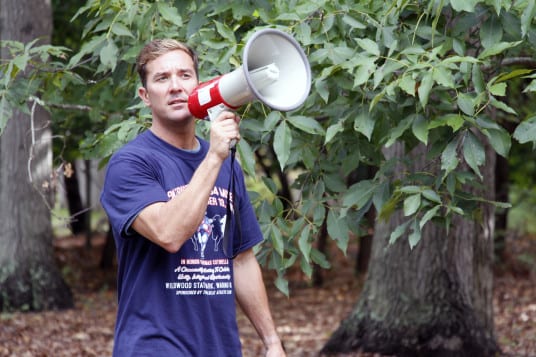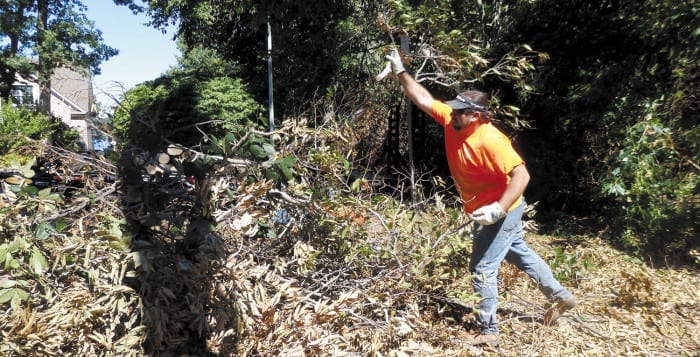Smile.
That’s what Gary Shek tells his employees at Wasabi Steakhouse in Miller Place. As the manager of the hibachi restaurant, Shek’s main concern is providing good service by tending to the customers and ensuring high-quality food — two reasons that encourage new and repeat customers to return to the restaurant.
The four-star establishment opened March 23, 2014. Since then, Shek is usually the main employee greeting guests when they arrive, and sends them off when they leave. While it may take him a couple tries, it doesn’t take long before Shek remembers the names and faces of his customers, which adds to the guest’s experience.
“Let’s say I see your face [one time], a year later, I will still say hi,” Shek said. “You make [the customer] feel like [they are really important]. Of course, business is very important, but the customer, you have to make them feel like family.”
According to Shek, some hibachi restaurants focus on having a classy or elegant style, while he wanted his restaurant to be more family oriented, since many of the residents he serves are families who may remain in the area until their kids graduate high school.

Kenny Ching, one of the owners of the restaurant, has known and worked with Shek since the mid-1990s. They met while working at the Secret Garden Tea Room in Port Jefferson. Ching said working with Shek is easy.
“I don’t have any pressure,” Ching said. “He can handle [work] pretty much himself. I don’t have to follow him. Training managers isn’t always easy.”
Shek credits his management skills to working in the hotel business in Hong Kong before he moved to Long Island in 1990. It was at the hotel where Shek tried to remember the names of hotel guests. It wasn’t until he transitioned to the restaurant business that Shek saw the difference between the hotel and restaurant business.
“From the hotels I [saw] the international [people from] different countries,” Shek said. “But here, [there are] local residents so I have to keep smiling every day [even if] I have a bad day.”
From 1995 to 1998 Shek also managed a Chinese restaurant for one of the individuals who owns Wasabi Steakhouse alongside Ching. Although Shek and Ching have to remember more types of dishes now than they did working at Chinese restaurants, they do their best to serve their customers and answer questions about the menu.
The service, as well as the food, is what keeps customers like Diana McGeoch and her family and friends coming back to Wasabi Steakhouse.
“We come here all the time,” McGeoch said. “Too many [times] to count. Fifteen plus maybe.”
“And he remembers us every time,” Brain Murray, a friend, said after McGeoch. “[The atmosphere is] very warm and welcoming. [Shek remembering our names] makes you feel special when you come here.”
Jean Casola of Rocky Point is another customer who dines at the restaurant for its service and high-quality food. Casola discovered the restaurant last year when she was celebrating her wedding anniversary.
“First of all, the service is amazing and polite beyond belief. Then the food comes out just the way you want it,” Casola said as she ate her dinner.
Shek said the restaurant goes out and picks up fresh cuts of fish and meats nearly twice a week, but also has fresh food delivered nearly five times a week. Leftover food is discarded after a day or more passes. According to Shek, some restaurants turn this food into an all-you-can-eat buffet.
While Shek acknowledges that people come back for the food and for hibachi, he doesn’t believe people come back to the restaurant because of him.
“I just want to be a successful manager,” Shek said.
But customers like Casola think differently.
Recently, Casola helped her daughter Faith pack for Pfeiffer University in North Carolina. She said her daughter misses eating at the restaurant, and in 30 days, so will Casola. She and her husband are moving to North Carolina to be closer to their daughter, but packing up means leaving Shek’s service and food at Wasabi Steakhouse.
“I don’t think they’re going to have anything like this there,” Casola said. “And they’re just not going to have another Gary, that’s for sure.”



































